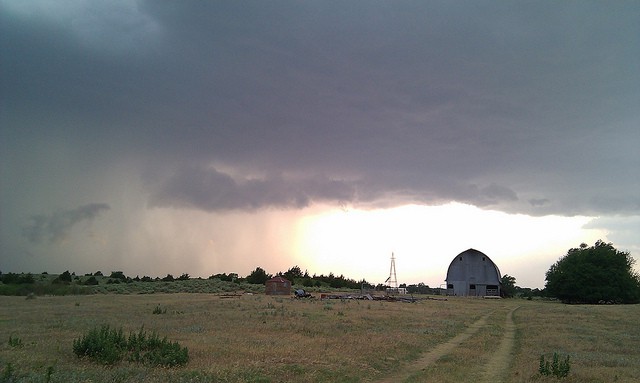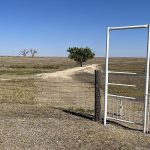
How do ranchers survive a drought while they wait for rain? They maintain more than one line of income. Photo by Becky McCray.
Small town people know that lean times can happen to anyone and any business.
- If you only sell to walk-in customers, what do you do when the city tears up your sidewalk?
- If you only do consulting, what do you do when you get sick for a month?
- If you only sell online, what do you do when your Internet connection goes down?
- If you primarily sell one big flagship product, what do you do as the market shifts imperceptibly out from under you?
The rural survival strategy is having multiple lines of income, to spread out those risks.
You don’t necessarily need multiple separate businesses, though I have several myself. It’s possible to build new lines of income within your existing business.
Before you start in on this, you need to know how to manage multiple lines. It’s not easy to add a new line while still keeping your business moving forward. Here are some tricks I’ve learned to managing my own businesses.
1. Build a portfolio of lines of income
Most healthy businesses can create income in one of three ways:
- one-to-one interactions
- one-to-many interactions
- on-their-own interactions
For example, an expert in commercial illustration might work directly with clients. That would be one-to-one. They might lead training classes. That would be one-to-many. They might write an instructional workbook. That would be on-their-own, where the clients could learn without needing the expert to be present.
Think about creating your own portfolio, diversified among these three methods.
You can check how balanced your business is on one sheet of paper. Divide the paper into equal thirds, labeled one-to-one, one-to-many and on-their-own. Put each current method you have for generating income in the correct column. How do you come out? Lopsided, or pretty balanced? If you really want to check, put the revenue numbers next to each line of business. Now how does it stack up?
My local sewing center in Alva, Oklahoma, has a decent portfolio. They sell sewing machines, teach classes on sewing, sell vacuum cleaners, service sewing machines, and speak at sewing events. Selling is generally a one-to-one activity. So is servicing. The classes and speaking are one-to-many. They don’t offer any on-their-own products right now, but they could easily write up books or workbooks, or create videos to sell. How did they get so diversified? They did it following the next tip.
2. First establish, then extend
Sometimes, people try to create several new lines of income all at once. That’s a mistake, and to see why, let’s take a look at farming.
Farmers take their time in adding any new crop. That new crop will take acres away from the existing (profitable) crops, so it needs to be worth the effort. If the new crop requires buying specialized equipment, that has to be factored in. Then there is the learning curve. Any new crop will take some time for the farmer to get a feel for it, to know the potential problems and the issues of timing. It’s a smart approach.
Take your time in adding new lines of income. Let each one get well-established before you move on to adding another one. It will take time away from your existing lines, so it needs to be worth it. If it takes new equipment or training, factor that in. Give yourself time to learn the feel of the new line, to know when it’s vulnerable, when it’s strong. Learn the seasons and cycles of your new line of income, before you start thinking about adding another one.
This is also the trick Richard Branson used, establishing one business at a time, growing it up to a thriving point, then making sure it could survive before he turned to establishing the next one.
3. Manage Your Time
When you have multiple lines vying for your attention, it’s hard to know what to work on next. Should you finish that work for a client, work on the ebook, or address the 800 things that you already needed to do in your business?
I deal with this by focusing on one at a time. I know my priorities for each line of income. That helps me know what each one needs next. I delegate (though I ought to do more). During a single day I may work on several different lines, but I give each my focus during that time. I might start out figuring the daily deposit for the liquor store, then head out to work on a windmill at the farm in the afternoon, and finally focus on my writing after that. Because I’m focused on each in turn, I keep them all moving forward.
How do I keep from getting distracted or scattered? I don’t think my day is more scattered or distracting than a typical corporate or office day, with meetings, emails, phone calls, and distractions everywhere.
Multiple lines of income help you face the What if? scenarios
Now that you have some ideas of how to manage multiple lines of income, you may be ready to start brainstorming for your own business. Take those “what if?” questions from the top of this article, and start thinking through your own scenarios. What would you do if…. Knowing the answers may mean the difference between surviving and failing.
New to SmallBizSurvival? Take the Guided Tour. Like what you see? Get our updates.










